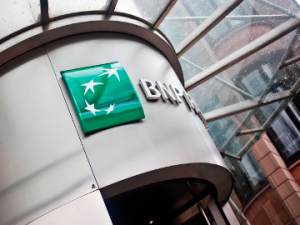
BNP Paribas, in collaboration with the Boston Consulting Group, have released their Corporate Treasury Insight for 2015, entitled “As the Dust Settles…” which explores what treasurers want from banks in order to maintain their department and how the role of the treasurer has evolved since the 2008 financial crisis.
The study surveyed over 500 treasurers and CFOs from organisations that have revenues of over $500 million in order to consolidate what treasurers expect from transaction banking services in the financial industry today.
The report found that since the financial crisis, risk, liquidity and cash management has been brought to the forefront for treasurers, but alongside this, their responsibilities have increased as they are now required to handle debt, financing and hedging strategies. “Further, about 50% of treasurers manage adjacent activities, such as trade finance and credit risk, and about 25% oversee some insurance and compliance activities,” the report continued.
When the corporate treasurers were asked about their top priority, risk management was rated the most important by those surveyed, followed by process efficiency and improving cash visibility. “My priority is to manage out day to day risks and advise senior management on the strategic decisions required to tackle them,” one treasurer quoted in the report said.
Attempting to control risk has become problematic for treasurers post financial crisis, as complying with new capital and liquidity rules can occasionally prevent them from obtaining financing. To solve this problem, the data revealed that treasurers explore working capital financing (WCF) as a solution, which is the capital of a business used on a day to day basis for trading operations. In addition to this, cash pooling and other financing sources are used.
The report also concentrated on emerging treasury technologies as a trend, but made clear that treasurers find the risk and compliance environment increasingly difficult to navigate. A third of corporate treasurers that participated in the survey revealed that better know-your-customer (KYC) and anti-money laundering (AML) processes would give banks a competitive edge. This would in turn, improve customer satisfaction which should be enough incentive for banks to simplify their systems through digitisation.
Treasurers would prefer banks to provide a more streamlined, automated platform with integrated offerings because they would consider moving to non-bank infrastructure, such as a TMS system, if this is not made available to them, the report said.
This was evidenced by the survey finding that more than one third of treasurers thought that Electronic Bank Account Management, or eBAM, technology is the future of cash management. “Beyond e-BAM, digitised management of signature delegations, e-invoicing, and automated account opening also offer significant potential for differentiation,” the report continued.
Despite the increasing awareness of treasury technology in corporate departments, there is little interest in financial mobile applications. Data showed that less than 5% of treasurers use mobile apps and the other 95% do not because of risk and security concerns. Alongside this, 60% do not plan to increase their usage and only 10% of those surveyed believe they will start using mobile banking apps significantly more than they do at present.
BNP Paribas’s report found that corporate treasurers would like to see banks create a treasurer centric banking platform with improved cash management systems and better automation capabilities. This would help treasurers function more effectively with the extra responsibilities that they have been given after the financial crisis.
“As the dust settled from the financial crisis, treasurers have embraced their expanded role. Transaction banks need to respond in kind by elevating the quality and reach of their service offerings,” the report concluded.






